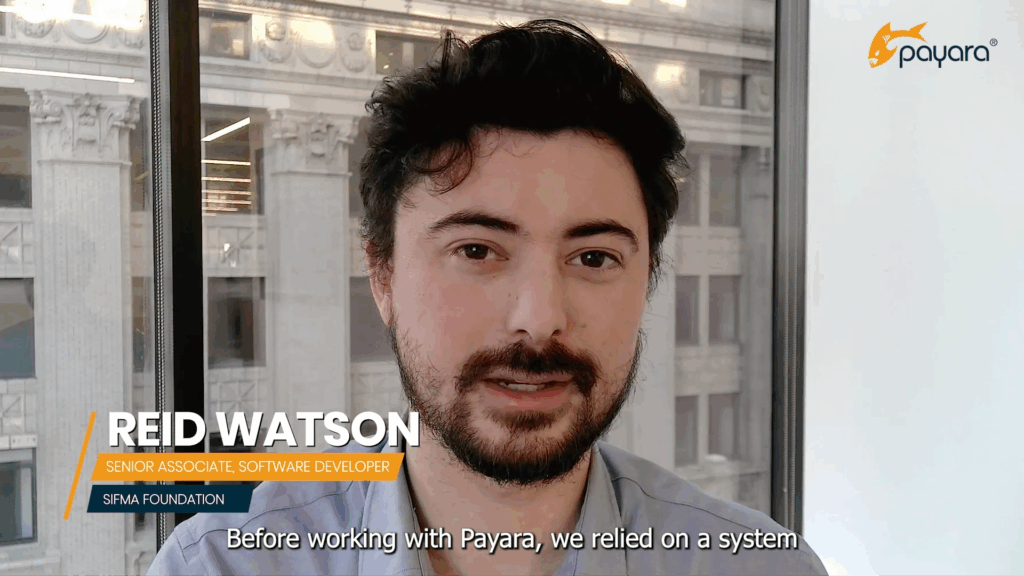 3 minutes
3 minutes
End-of-Life Technology: How to Drive Innovation Without Compromising Stability
When legacy systems approach end-of-life (EOL), enterprise IT teams typically face the choice of moving forward at all costs […]

When the SIFMA Foundation needed to modernize its aging financial education platform used by thousands of students, it turned to Payara Platform Enterprise for a scalable, reliable Java-based solution that could run seamlessly on IBM Advanced Interactive eXecutive (AIX) systems. The result: boost in user capacity per machine, streamlined deployments, and the flexibility to innovate continuously. With Payara’s responsive enterprise support and robust middleware technologies, SIFMA transitioned its mission-critical system to a modern architecture that is empowering the application and the organization to grow its impact, serve more students, and deploy updates confidently and efficiently.
The SIFMA Foundation, a non-profit arm of the Securities Industry and Financial Markets Association (SIFMA), has a clear mission: to educate individuals of all backgrounds on financial markets and economic principles. Through its renowned Stock Market Game™ for students grades 4-12 and related programs, the organization has reached millions, helping foster financial literacy and economic opportunity at scale.
But behind the scenes of this mission-driven effort was a decades-old technical stack: a proprietary C/C++-based middleware platform that had reached its functional and support limits.
“Before working with Payara, we relied on a system that was a little outdated and it was unsupported proprietary middleware that eventually made our entire system obsolete. This limited our ability to scale and limited our ability to modernize our operations with the latest and greatest technology available.”
As student participation surged and expectations around uptime and flexibility increased, the legacy system began to show its age. During peak sessions, the platform needed to support upwards of 8,000 concurrent users, yet the infrastructure was only comfortably handling 2,000-4,000 users. The SIFMA Foundation needed a path to modernization for its application and middleware that could support Java-based architectures, integrate smoothly with AIX, and offer strong support throughout the transition.
After evaluating options, the SIFMA Foundation chose Payara Platform Enterprise to serve as the backbone of their new Java-based system. Migrating from a monolithic C/C++ implementation to a Java-based architecture was a major lift, but Payara Platform Enterprise, which worked like an out-of-a-box solution, helped minimize any disruption while quickly delivering key modernization benefits.
The impact was immediate and dramatic. After moving to Payara Platform Enterprise, the SIFMA Foundation team noticed:
Even when unexpected challenges arose, such as a silent AIX upgrade that impacted the Java environment, Payara’s support team stepped in immediately to help resolve the issue.
“I have to say our performance increased, so we went from a shop that could handle maybe 1,000-2,000 users per machine to a shop that could handle 4,000-5,000 users per machine. We became more efficient naturally, by just moving into this platform.”
Watch the testimonial:
Watch the full interview: https://www.crowdcast.io/c/virtual-payara-conferece-dec-2024-strategic-insight/sPMTF
Read the full case study on JavaPro: https://javapro.io/2025/06/30/application-modernization-empowers-financial-literacy-at-scale/
 3 minutes
3 minutes
When legacy systems approach end-of-life (EOL), enterprise IT teams typically face the choice of moving forward at all costs […]
 5 minutes
5 minutes
November has been one of the busiest months of the year for the Java and Jakarta EE ecosystem. With […]
 3 minutes
3 minutes
Working with enterprise Java databases can sometimes feel like swimming upstream. Jakarta EE 11’s Jakarta Data helps developers glide […]